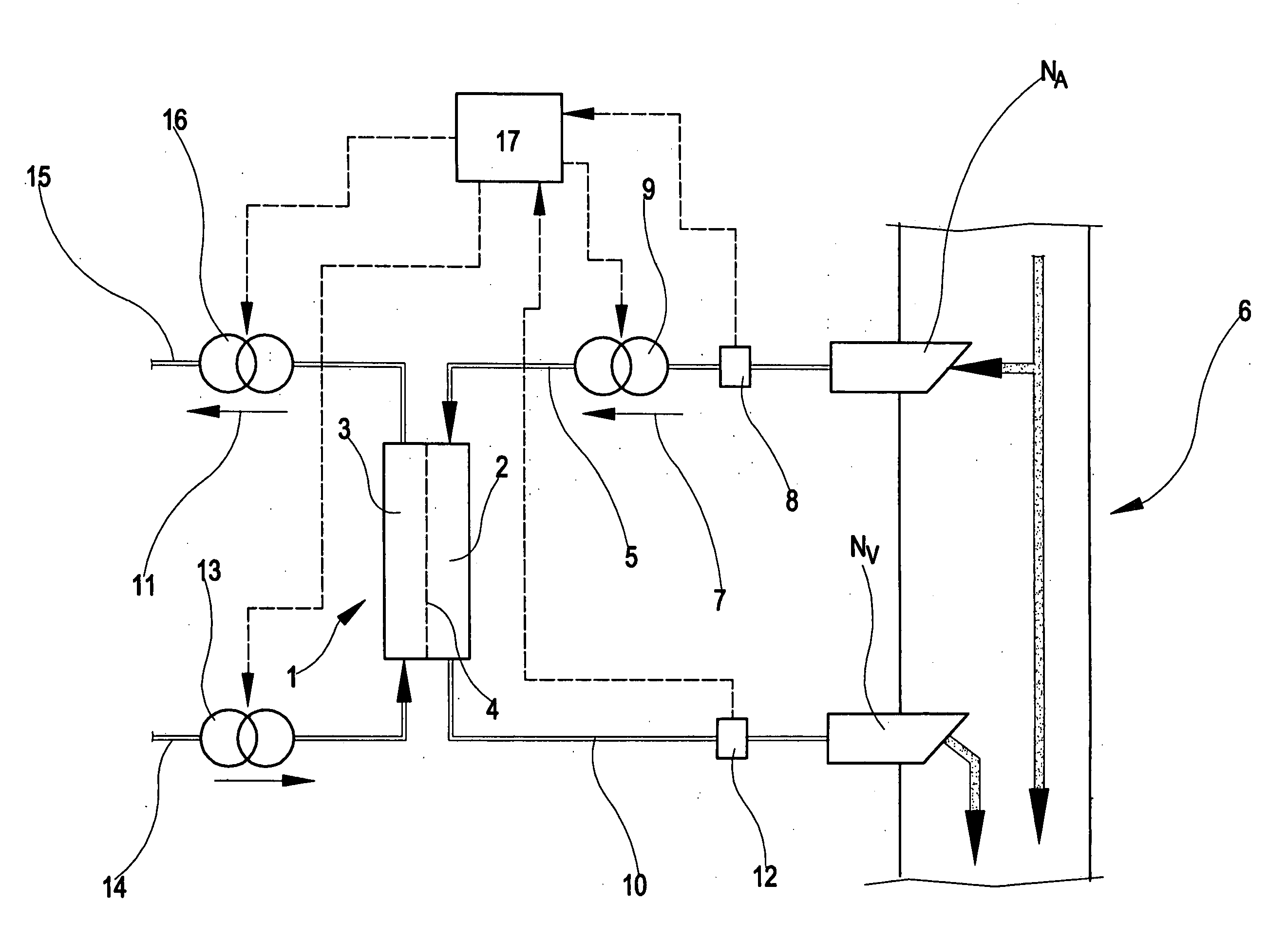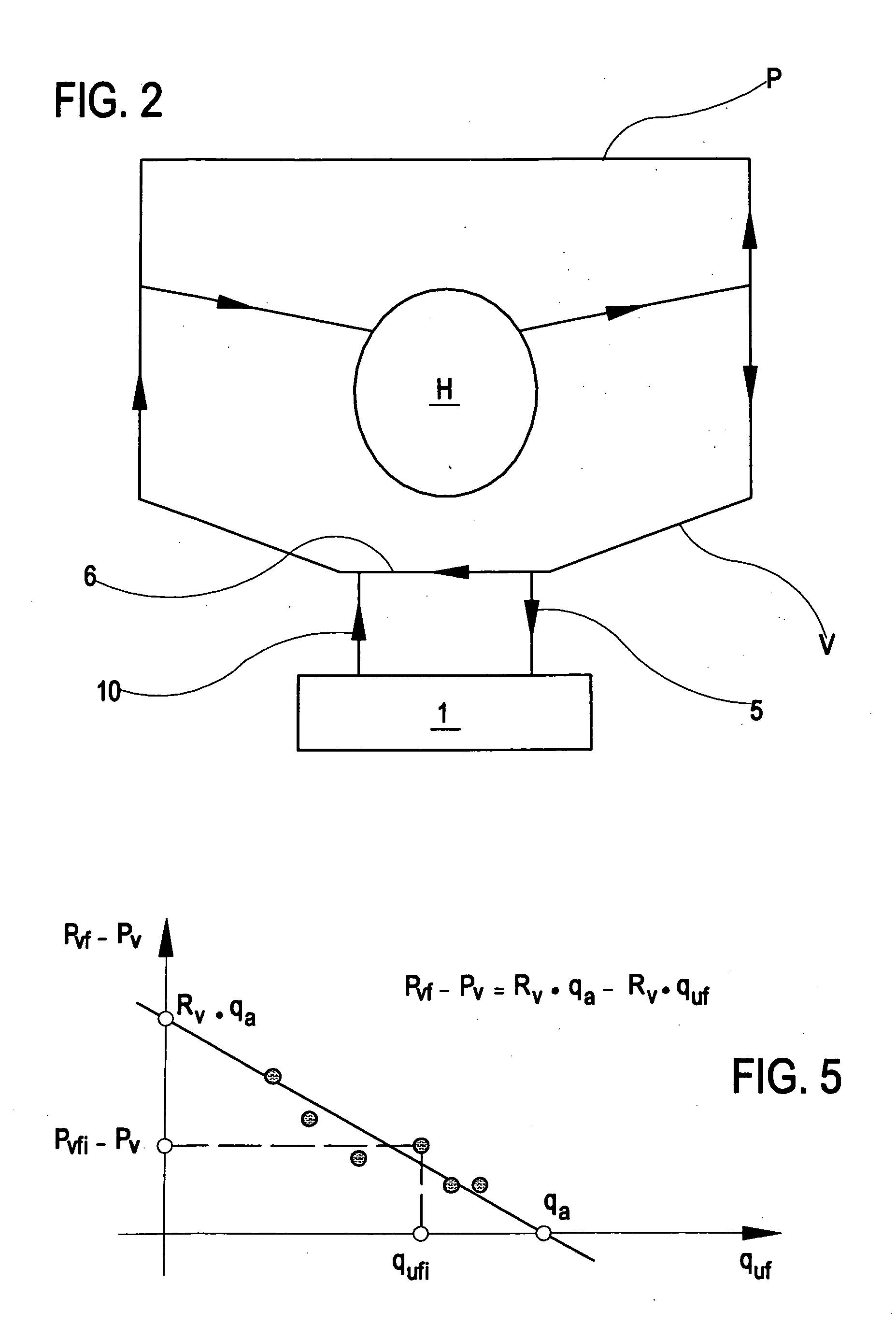Apparatus and method of monitoring a vascular access of a patient subjected to an extracorporeal blood treatment
a technology for extracorporeal blood treatment and apparatus, which is applied in the direction of other blood circulation devices, filtration separation, separation processes, etc., can solve the problems of reducing monitoring the efficiency of vascular access, and undesirable phenomenon of recirculation of blood
- Summary
- Abstract
- Description
- Claims
- Application Information
AI Technical Summary
Benefits of technology
Problems solved by technology
Method used
Image
Examples
first example
[0301] This example uses the above-described first monitoring procedure, applied to the apparatus of FIG. 1.
[0302] Direct measurement of pressures Pa, Paf, Pvf were taken at different flow rate values qb. The measurements taken are reported in the following table.
qbPaPafPvfΔPf(ml / min)(mmHg)(mmHg)(mmHg)(mmHg)300100514292005241111005440144005142950050437
[0303] The equation of the straight line interpolating points ΔPf is as follows (see FIG. 4, where ΔPf is a function of qb): [0304]ΔPf=0.016·(925 −qb)
[0305] From which the following values are calculated [0306] Rf=0.016 mmHg min / ml [0307] qa=925 ml / min
[0308] From the third equation of the mathematical.model used (assuming Pv=0) we have qb1=300 ml / min: Rv=Pvf 1qa=0.045 mmHg·min / ml
[0309] Given Pa=100 mmHg, for qb1=300 ml / min we obtain: Rd=Pa-Paf 1qa=0.053 mmHg·min / ml
second example
[0310] The second example uses the fourth monitoring procedure.
[0311] In the following the values of the pressure measured at different blood pump flow rates are reported.
qbPaPafPvfΔPv(ml / min)(mmHg)(mmHg)(mmHg)(mmHg)012062350150118593725011757373501145338
[0312] From these values we obtain: ca 0=Paf 0-Pv 0Pa 0-Pv 0=0.52cv 0=Pvf 0-Pv 0Pa 0-Pv 0=0.29
[0313] By applying a linear regression algorithm to the following equation:
Pafi-ca0·Pai−(1-ca0)·Pv0=ca1·qbi
the following value for coefficient ca1 was found: [0314] ca1=−0.0155
[0315] After which the following resistance values were found: [0316] Rd=0.069 mmHg min / ml [0317] Rf=0.032 mmHg min / ml [0318] Rv=0.042 mmHg·min / ml
[0319] From this we calculated: qa=Paf 0-Pvf 0Rf=842 ml / min
PUM
| Property | Measurement | Unit |
|---|---|---|
| temperature | aaaaa | aaaaa |
| pressure | aaaaa | aaaaa |
| pressure | aaaaa | aaaaa |
Abstract
Description
Claims
Application Information
 Login to View More
Login to View More - R&D
- Intellectual Property
- Life Sciences
- Materials
- Tech Scout
- Unparalleled Data Quality
- Higher Quality Content
- 60% Fewer Hallucinations
Browse by: Latest US Patents, China's latest patents, Technical Efficacy Thesaurus, Application Domain, Technology Topic, Popular Technical Reports.
© 2025 PatSnap. All rights reserved.Legal|Privacy policy|Modern Slavery Act Transparency Statement|Sitemap|About US| Contact US: help@patsnap.com



